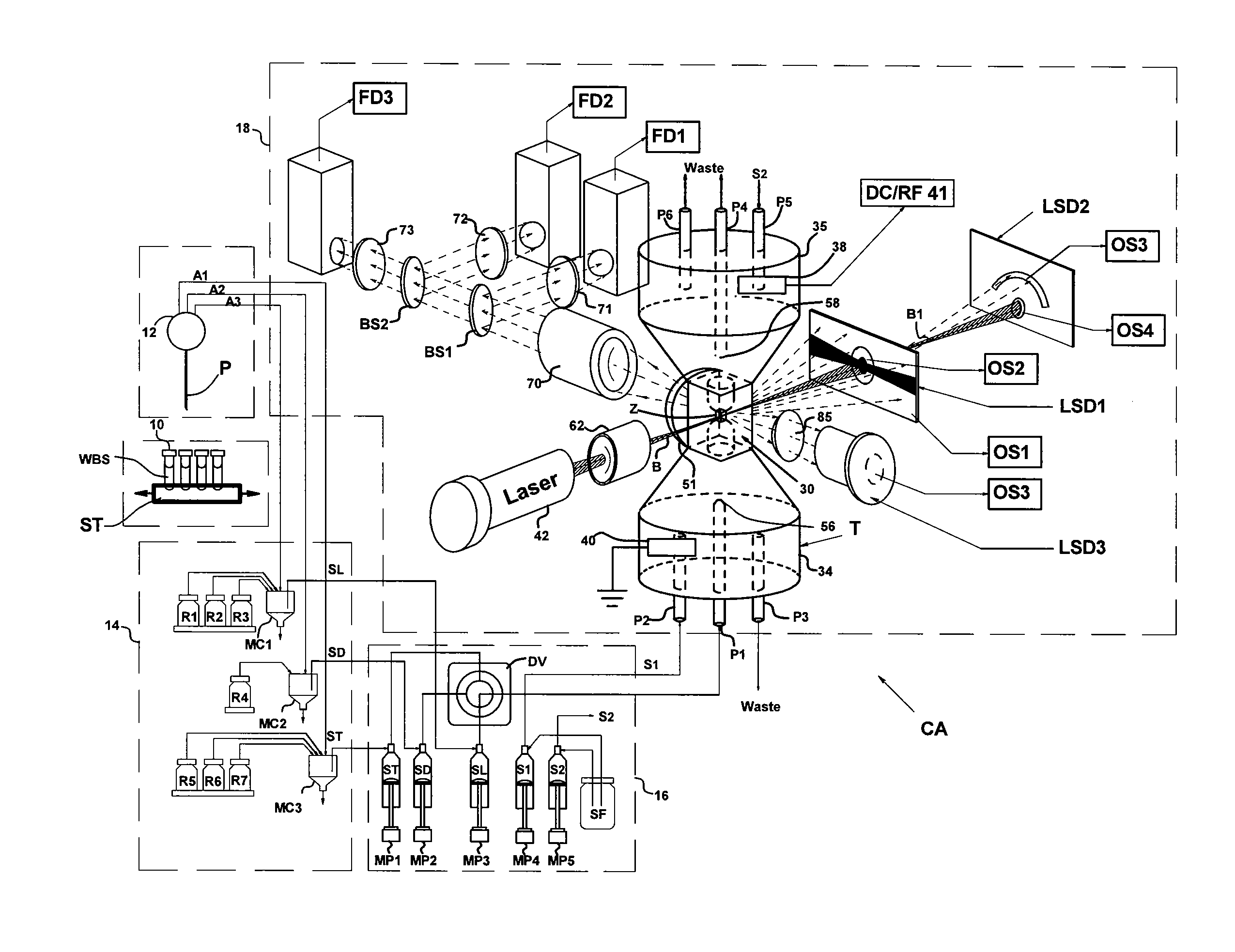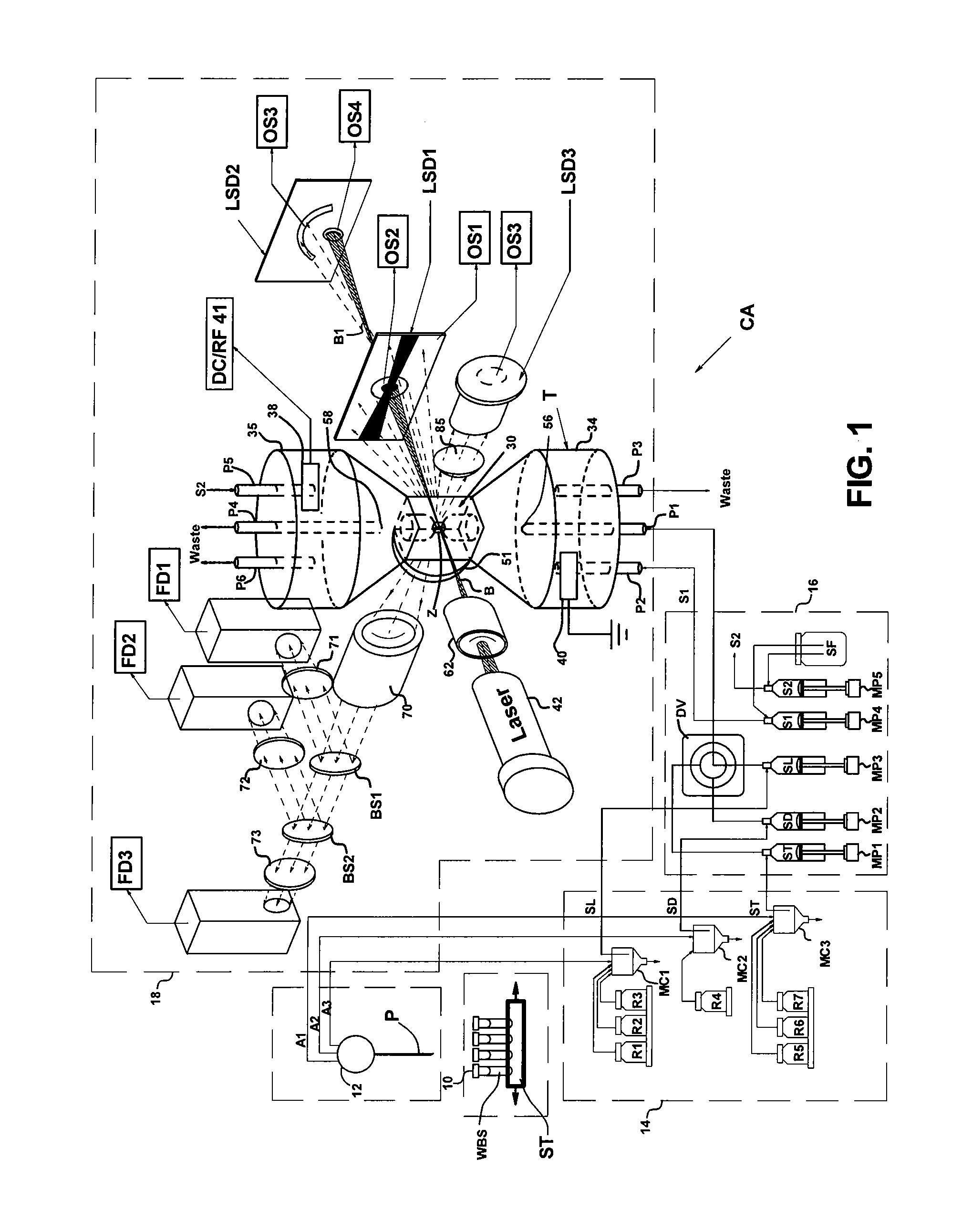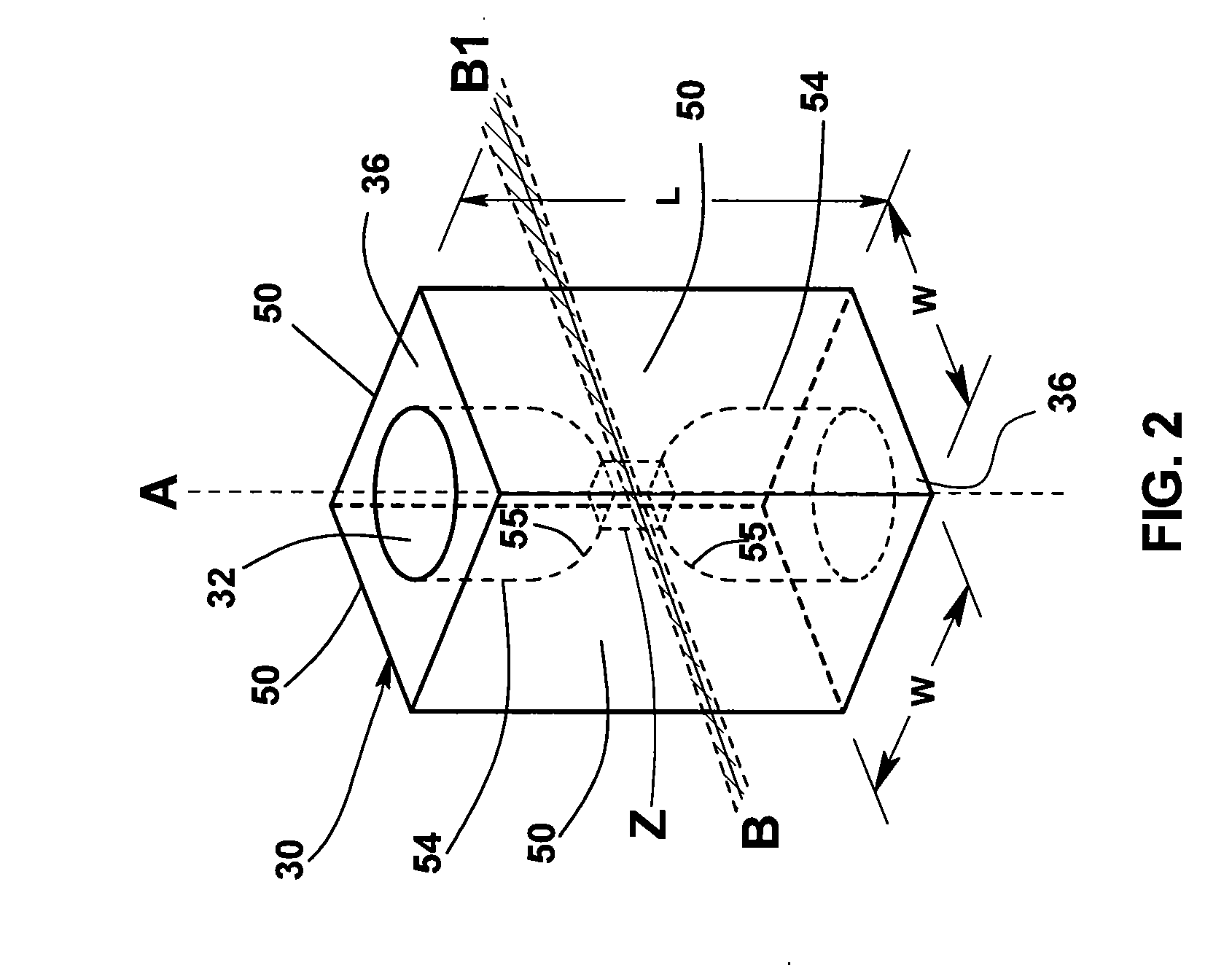Monolithic Optical Flow Cells and Method of Manufacture
a technology of optical flow cells and monolithic crystals, applied in glass tempering devices, manufacturing tools, instruments, etc., can solve the problems of difficult to achieve the combination of square/square cross-sectional geometries, difficult to achieve wall flatness, and fundamental performance limits of instruments of the type noted, etc., to achieve the effect of improving the yield of useful flow cells, less subject, and improving differentiation
- Summary
- Abstract
- Description
- Claims
- Application Information
AI Technical Summary
Benefits of technology
Problems solved by technology
Method used
Image
Examples
Embodiment Construction
[0033]Flow cytometers acquire diagnostically important data from samples of patient body fluids containing various formed bodies, and many different embodiments have been developed. All depend on a channel in a flow cell through which such samples may be passed after undergoing various preparatory protocols and in which various properties of the formed bodies may be sensed, whereby the several types of subpopulations of formed bodies therein may be differentiated and enumerated and the derived parameters processed and correlated to provide desired diagnostics. As discussed above, flow cytometers incorporating simultaneous acquisition of optical and Coulter V and / or C parameters from an individual formed body require within the flow channel of their optical flow cells a constriction (or volumeter conduit) having relatively small lengths and transverse cross-sections. One such hematology analyzer is more fully disclosed in the above-noted U.S. Pat. No. 6,228,652, on which two of the p...
PUM
| Property | Measurement | Unit |
|---|---|---|
| length | aaaaa | aaaaa |
| length | aaaaa | aaaaa |
| thickness | aaaaa | aaaaa |
Abstract
Description
Claims
Application Information
 Login to View More
Login to View More - R&D
- Intellectual Property
- Life Sciences
- Materials
- Tech Scout
- Unparalleled Data Quality
- Higher Quality Content
- 60% Fewer Hallucinations
Browse by: Latest US Patents, China's latest patents, Technical Efficacy Thesaurus, Application Domain, Technology Topic, Popular Technical Reports.
© 2025 PatSnap. All rights reserved.Legal|Privacy policy|Modern Slavery Act Transparency Statement|Sitemap|About US| Contact US: help@patsnap.com



